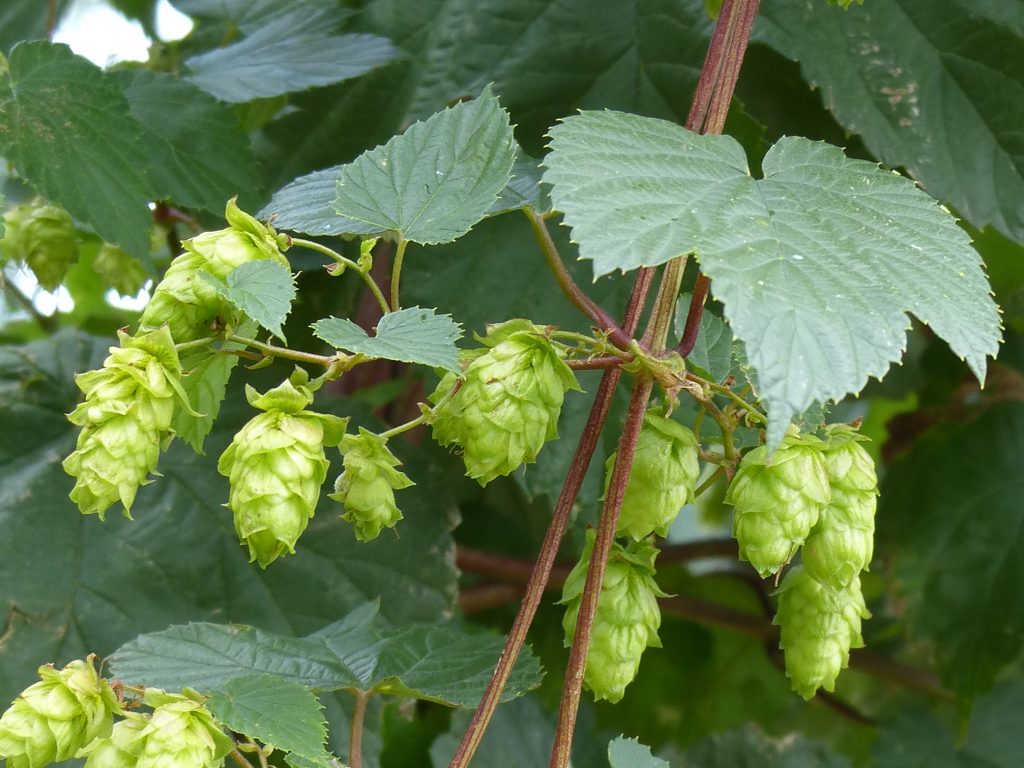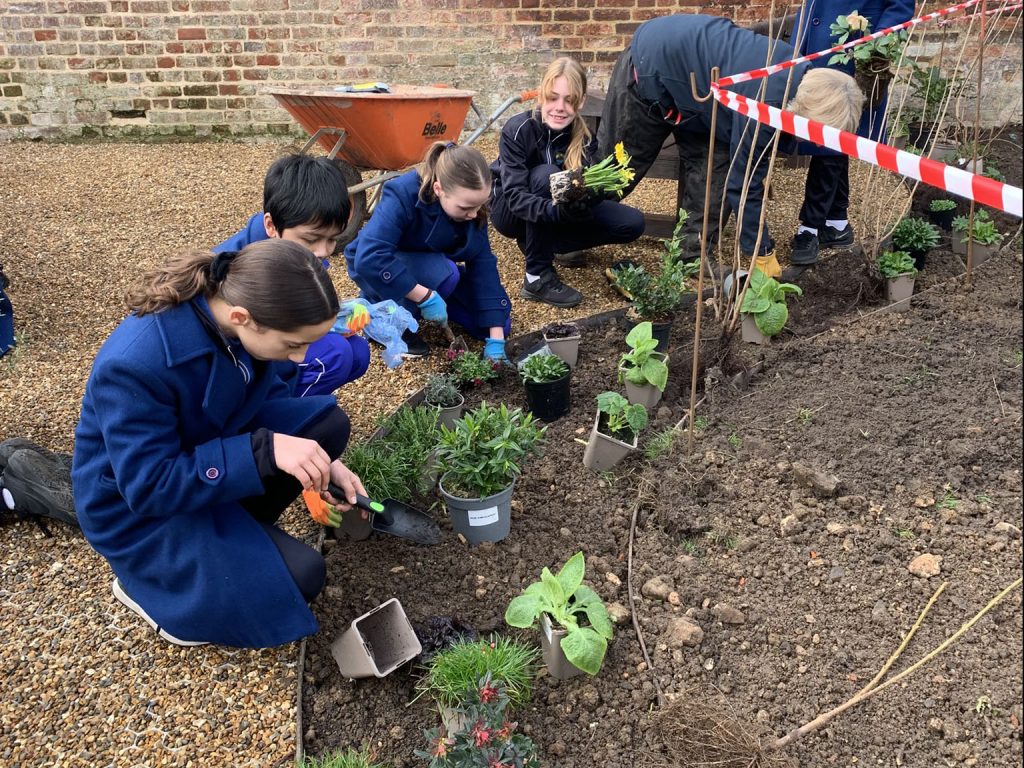The ‘Millennium Yew’ tree on your left was planted in January 2000 by the then vicar, Revd John Hassell, to commemorate the new millennium. This was a project that was carried out in almost all Anglican parish churches.
Yew trees were often associated with pagan sites that were later succeeded by churches, when the Christian faith came to this island.
In the 1591 Walker map of Chelmsford (held at the Essex Record Office), this area of Moulsham is shown as the ‘Upper Hop Ground’, and it is a peculiarity of the site that hops still grow along the north side of the churchyard behind the bench. Who knows, they may be descendants of those hops that grew here nearly 500 years ago?

Family Fun
The Yew tree you can see here with needle-like leaves was planted in 2000, but Yew trees have actually been around for thousands of years!
Yew Tree Fact File
- Yew trees are extremely strong and are therefore used to make tools, furniture and longbows.
- The oldest known yew longbow is around six THOUSAND years old!
- Yew trees are poisonous to humans, but if they are used properly parts of the leaves can be used in medicine.
Activity
Trees play an important role in our churchyard. They improve the air by absorbing carbon dioxide and giving us oxygen to breath. What other trees can you find as you walk around? See if you can spot:
A Lime tree with heart shaped leaves.
A Holly tree with wavy prickly leaves.
The Yew tree you can see here with needle-like leaves was planted in 2000, but Yew trees have actually been around for thousands of years!

Discover the stories woven into the green heart of our community. As you wander around the church yard, explore the history, nature and shared memories with friends and family.